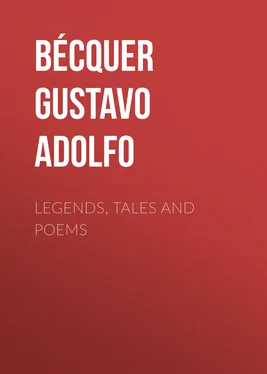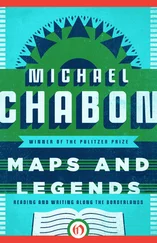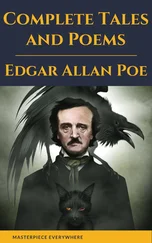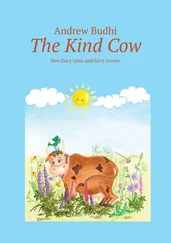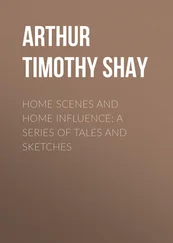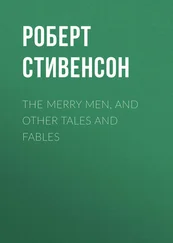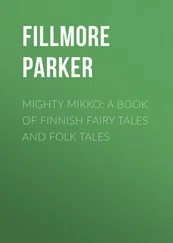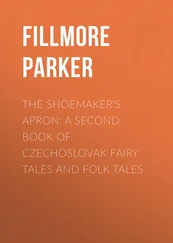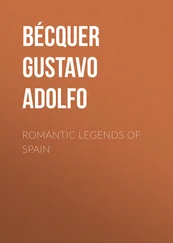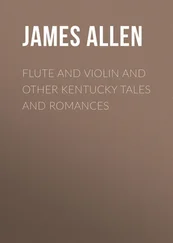Gustavo Bécquer - Legends, Tales and Poems
Здесь есть возможность читать онлайн «Gustavo Bécquer - Legends, Tales and Poems» — ознакомительный отрывок электронной книги совершенно бесплатно, а после прочтения отрывка купить полную версию. В некоторых случаях можно слушать аудио, скачать через торрент в формате fb2 и присутствует краткое содержание. Жанр: foreign_prose, literature_19, foreign_antique, на английском языке. Описание произведения, (предисловие) а так же отзывы посетителей доступны на портале библиотеки ЛибКат.
- Название:Legends, Tales and Poems
- Автор:
- Жанр:
- Год:неизвестен
- ISBN:нет данных
- Рейтинг книги:5 / 5. Голосов: 1
-
Избранное:Добавить в избранное
- Отзывы:
-
Ваша оценка:
- 100
- 1
- 2
- 3
- 4
- 5
Legends, Tales and Poems: краткое содержание, описание и аннотация
Предлагаем к чтению аннотацию, описание, краткое содержание или предисловие (зависит от того, что написал сам автор книги «Legends, Tales and Poems»). Если вы не нашли необходимую информацию о книге — напишите в комментариях, мы постараемся отыскать её.
Legends, Tales and Poems — читать онлайн ознакомительный отрывок
Ниже представлен текст книги, разбитый по страницам. Система сохранения места последней прочитанной страницы, позволяет с удобством читать онлайн бесплатно книгу «Legends, Tales and Poems», без необходимости каждый раз заново искать на чём Вы остановились. Поставьте закладку, и сможете в любой момент перейти на страницу, на которой закончили чтение.
Интервал:
Закладка:
b. a in a final unaccented syllable predominates over a preceding or following e in the same syllable. Therefore, corpórea and rósea assonate in ó-a.
c. o in a final unaccented syllable predominates over a preceding e in the same syllable. Therefore, óleo and erróneo assonate in ó-o; but o in a final unaccented syllable is dominated by a following e in the same syllable, and the e counts in the assonance. Therefore, héroe and veces assonate in é-e.
11. When two weak vowels (i, u) are united in a diphthong, the second predominates. Thus triunfo and chulo assonate in ú-o; cuido and bendito assonate in i-o.
12. There are twenty possible assonances in Spanish: á, ó, é, i, ú, á-a, á-e, á-o, é-a, é-e, é-o, ó-a, ó-e, ó-o, i-a, i-e, i-o, ú-a, ú-e, ú-o.
13. Words that have in the final unaccented syllable i or u, not in diphthongs, are considered for purposes of assonance as if ending in e or o respectively. Therefore, fácil and nave assonate in á-e; espíritu and líquido , in i-o.
14. If ai occurs in a syllable after an a in the accented syllable, the i rather than the a of the diphthong counts in the assonance. Therefore, cantares and trocabais assonate in á-e. If the accented vowel is not a, the a of ai counts in the assonance. Therefore, Vicenta and quisierais assonate in é-a.
15. Consonantal rhyme should not be introduced in compositions written in assonance. This rule is not always observed (see pp. 183–184, LIII).
16. The assonance of alternate lines (the even numbers) is the rule in modern Spanish. If the composition is short the same assonance may be kept throughout.
Blank Verse.—Verses which lack both consonantal rhyme and assonance occur in Spanish, and are called versos sueltos (or libres ). Compositions in blank verse are, however, extremely difficult to write in Spanish, and are therefore comparatively rare.
STROPHES
The strophe is frequently of arbitrary length, yet when the poet has once fixed the measure of his strophe he is supposed to preserve the same measure throughout. The following are some of the strophic arrangements in Spanish.
1. Pareados are pairs of contiguous verses of the same number of syllables, which rhyme[1] together in pairs.
[Footnote 1: By rhyme hereafter shall be understood consonantal rhyme, unless otherwise indicated.]
2. Tercetos are a series of strophes, in the first of which the first verse rhymes with the third, and, from the second strophe on, the first and third verse of each successive strophe rhyme with the middle verse of the preceding strophe. This form of verse is known in Italian as terza rima . The composition ends with a serventesio (see below), of which the first and third verses rhyme with the middle verse of the preceding strophe. The rhyme-scheme, then, would be a b a, b c b, c d c, etc., d e d e.
3. Cuartetas , properly so called, are strophes of four eight-syllable verses, of which the second verse rhymes (or is in assonance) with the fourth. Cuarteta is likewise a general name given to strophes of four verses.
Serventesios are strophes of four hendecasyllables, of which the first rhymes or assonates with the third, and the second with the fourth.
4. Redondillas are strophes of four eight-syllable (or sometimes six-syllable) verses which rhyme as follows: a b b a.
5. Cuartetos are strophes of four hendecasyllables with the rhyme-scheme a b b a. It is not customary to put a final word that is aguda in the uneven verses of compositions written in hendecasyllables, or in verses that rhyme with them. Sometimes the four verses are esdrújulos.
6. Romances , which are the most used of all forms, need not be written in cuartetas . It is sufficient that the even verses be in assonance and the uneven verses free. Romances, properly so called, are composed of octosyllabic verses.
7. Romancillos are romances composed of verses with less than eight syllables.
Romances heróicos are romances composed of hendecasyllabic verses, all of which are llanos .
8. Quintillas are combinations of five verses that have but two rhymes, of which one occurs three times and the other twice. These verses may rhyme at the will of the poet, provided that three verses having the same rhyme do not follow each other successively. Of the possible arrangements the following occur most frequently: a a b b a, a b b a a, a b a b a, a b a b b.
9. Sextinas are usually composed of six hendecasyllabic verses in which a serventesio is followed by a pareado .
The first, third, and fifth verses, however, may rhyme together, and the second, fourth, and sixth.
There are also sextinas which have the third and sixth verses with a consonantal rhyme in words that are agudas , while the first and second, and the fourth and fifth, form pareados .
In compositions written in sextinas the succeeding strophes have the same arrangement as the first.
10. Octavas:
a. Octavas de Arte mayor are composed of eight dodecasyllables divided into two equal hemistichs, with the accents on the second, fifth, seventh, and eleventh syllables. The first verse rhymes with the fourth, fifth, and eighth; the second with the third; and the sixth with the seventh. Sometimes the second rhymes with the fourth, the fifth with the eighth, the first with the third, the sixth with the seventh.
b. Octavas reales are strophes of eight hendecasyllabic verses ( llanos ), of which the first six rhyme alternately and the last two form a pareado .
When octavas of this form have eight-syllable verses or less, they are called octavillas .
c. Octavas and Octavillas Italianas :
There are four variants, but all must have the fourth and eighth verses agudos .
First variant : There is no verso libre , and the rhyme-scheme is a b b c a d d c.
Second variant : The first and fifth verses are libres and the others rhyme 1 b b c 5 d d c. This form is the most used of all.
Third variant : All the verses are libres except the fourth and eighth.
Fourth variant : The rhymes have some other arrangement than those mentioned in the three preceding cases.
11. Décimas are strophes of ten octosyllabic verses with the rhyme-scheme a b b a a c c d d c.
Thus far all the compositions treated have been strophes, of which all the lines have the same number of syllables.
The most common strophes having an unequal number of syllables in the component verses are as follows:
12. Endechas reales are cuartetas in which three heptasyllables are followed by a hendecasyllable. The even verses are usually in assonance, although the verses may have the rhyme-scheme a b a b.
13. The Lira is a strophe of five verses, of which the first, third, and fourth are heptasyllables, and the second and fifth are hendecasyllables. The rhyme-scheme is a b a b b.
14. Seguidillas are strophes composed of seven verses, three of which are heptasyllables and four pentasyllables. The first, third, and sixth verses are libres , the second and fourth have the same assonance, and the fifth and seventh another distinct assonance.
15. Silvas are series of strophes composed of hendecasyllables and heptasyllables of unequal number and unevenly distributed with a free arrangement of rhymes. Every verse should rhyme with another, yet sometimes a verse is left unrhymed in long compositions.
Читать дальшеИнтервал:
Закладка:
Похожие книги на «Legends, Tales and Poems»
Представляем Вашему вниманию похожие книги на «Legends, Tales and Poems» списком для выбора. Мы отобрали схожую по названию и смыслу литературу в надежде предоставить читателям больше вариантов отыскать новые, интересные, ещё непрочитанные произведения.
Обсуждение, отзывы о книге «Legends, Tales and Poems» и просто собственные мнения читателей. Оставьте ваши комментарии, напишите, что Вы думаете о произведении, его смысле или главных героях. Укажите что конкретно понравилось, а что нет, и почему Вы так считаете.
